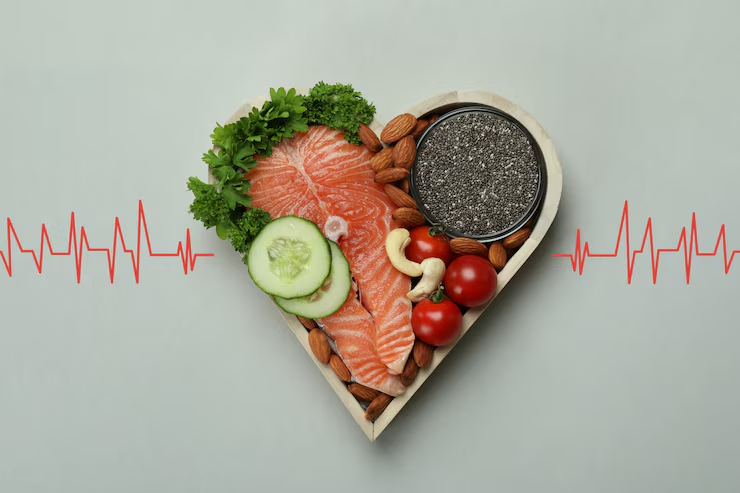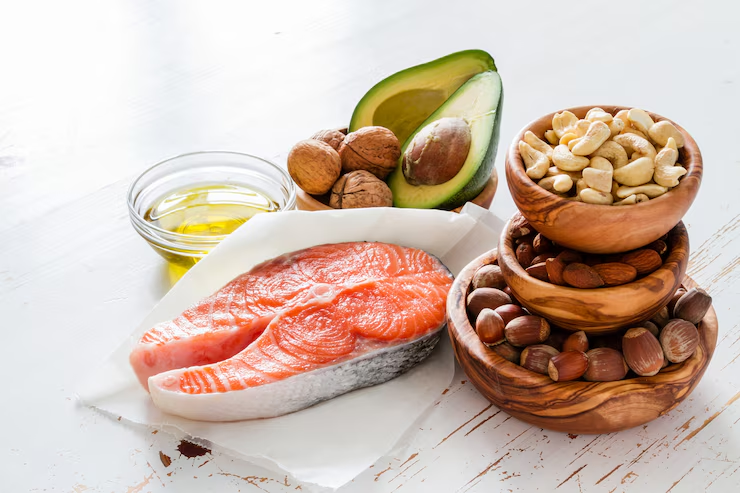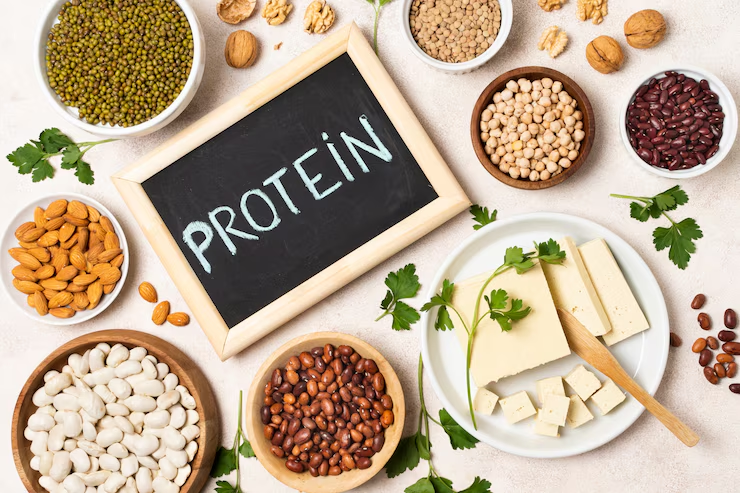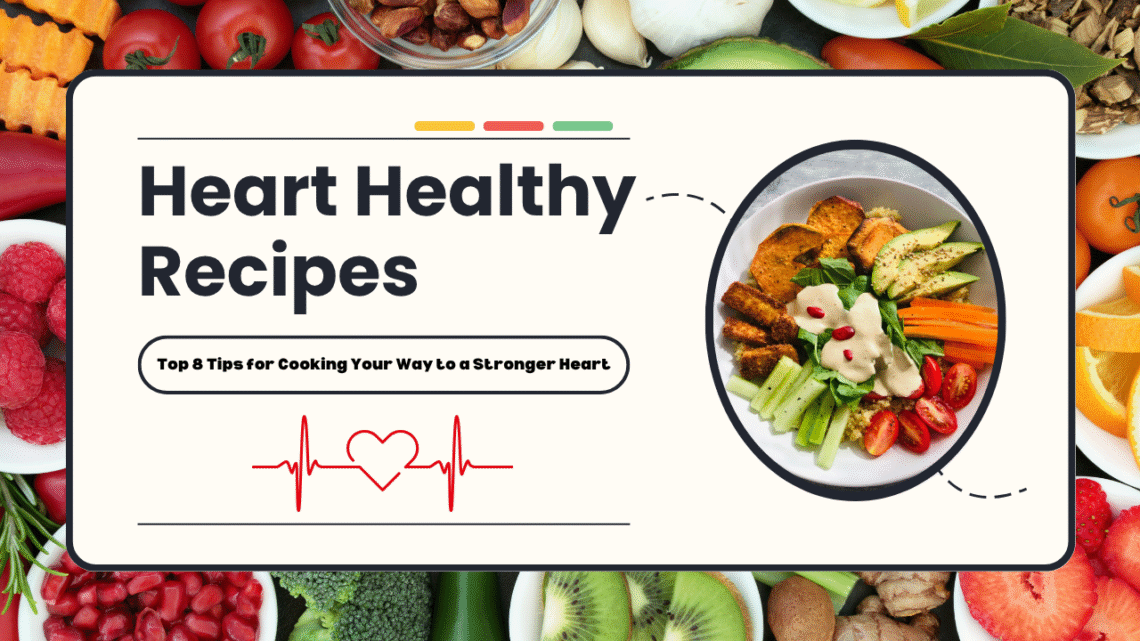Your Heart Healthy Recipes works hard for you every single day. It pumps oxygen-rich blood throughout your body, powers every organ, and keeps you alive and thriving. But with heart disease being the leading cause of death globally, taking care of your heart has never been more important. The good news? Your kitchen holds the power to support your cardiovascular health—one heart healthy recipe at a time.
When it comes to protecting your cardiovascular health, what you put on your plate matters just as much as exercise or sleep. Heart healthy recipes are more than just bland salads—they’re flavorful, nutrient-packed meals designed to support a strong, resilient heart. By making a few smart swaps in the kitchen and focusing on whole, wholesome ingredients, you can lower cholesterol, reduce blood pressure, and improve overall wellness.
This comprehensive guide will introduce you to everything you need to know about preparing heart healthy recipes at home. From choosing the right types of fats to adding more fiber-rich vegetables and lean proteins, each tip is backed by science and designed for real-life implementation. You’ll learn the top 8 cooking and eating habits that promote heart health and discover how simple adjustments can make your meals both delicious and good for your heart.
Whether you’re preventing future issues or managing an existing condition, cooking with heart-friendly ingredients empowers you to take control of your health—one bite at a time. By incorporating these strategies into your daily routine, heart healthy recipes become a long-term lifestyle, not just a temporary diet. Let’s dive into how you can eat well and love your heart at the same time.
Why Heart Healthy Recipes Matter

Food is much more than just fuel for our bodies—it’s one of the most powerful tools for maintaining and improving our health. A heart-healthy diet plays a crucial role in reducing the risk of serious conditions like high blood pressure, high cholesterol, inflammation, and obesity. By choosing the right foods, you can support your cardiovascular system and enhance your overall well-being.
Heart-healthy recipes often emphasize nutrient-dense ingredients such as whole grains, fresh fruits and vegetables, lean proteins, nuts, seeds, and healthy fats like olive oil or avocado. These foods are rich in fiber, antioxidants, and essential nutrients that help lower bad cholesterol, stabilize blood sugar, and reduce inflammation throughout the body.
In addition to protecting your heart, a balanced diet can significantly boost your mood and energy levels. You’ll feel more alert, focused, and emotionally balanced. Eating nourishing meals regularly can also support a healthy metabolism and promote weight loss or maintenance.
Making small, sustainable changes to your eating habits can lead to long-term benefits. Whether you’re preparing meals at home or choosing healthier options when dining out, incorporating heart healthy recipes into your daily routine is a smart and proactive way to take control of your health and longevity—one bite at a time.
Heart healthy recipes focus on:
- Reducing saturated fats, trans fats, and added sugars
- Increasing fiber, antioxidants, and healthy fats
- Maintaining balanced sodium and cholesterol levels
- Supporting optimal blood pressure and circulation
🍽️ Top 8 Tips for Cooking Heart Healthy Recipes
1. Choose Whole Grains Over Refined Carbs
Whole grains are packed with fiber, which helps lower bad cholesterol (LDL) and stabilize blood sugar.
Smart swaps:
- Brown rice instead of white rice
- Quinoa or barley instead of white pasta
- Oats instead of sugary cereals
Hearty Quinoa Bowl with Roasted Veggies: A Delicious Heart-Healthy Recipe
Looking for a simple, nutritious meal that supports heart health? Try this Hearty Quinoa Bowl with Roasted Veggies—a flavorful and satisfying dish that’s packed with fiber, protein, and essential nutrients. As one of the best heart healthy recipes, it’s perfect for anyone looking to eat well without sacrificing taste.
Start by cooking quinoa, a whole grain rich in plant-based protein and fiber, which helps lower cholesterol and support a healthy heart. While the quinoa is cooking, roast cubed sweet potatoes until they’re tender and caramelized. Sweet potatoes are an excellent source of potassium and antioxidants, known to reduce inflammation and regulate blood pressure.
Next, sauté fresh spinach until just wilted, and rinse and drain canned chickpeas for a protein-packed addition. Combine everything in a large bowl and drizzle with a little extra virgin olive oil—a heart-healthy fat known to improve cholesterol levels and support overall cardiovascular health.
This colorful, nutrient-dense quinoa bowl is not only satisfying but also incredibly easy to prepare. It’s a great example of how heart healthy recipes can be both wholesome and delicious. Enjoy it warm or cold, and feel good knowing you’re fueling your body with ingredients that support long-term wellness.
2. Cook with Heart-Healthy Fats

Not all fats are bad. Unsaturated fats—especially omega-3 fatty acids—are great for heart health.
Heart-friendly fats:
- Olive oil
- Avocados
- Nuts and seeds
- Fatty fish (like salmon, mackerel, or sardines)
Avoid: Butter, shortening, margarine, and fried foods.
Recipe Idea:
Grilled Salmon with Avocado Salsa
Salmon rich in omega-3s paired with heart-loving avocado salsa is a perfect main dish.
3. Fill Half Your Plate with Vegetables
The Power of Vegetables in Heart Healthy Recipes
Vegetables are a cornerstone of any heart-healthy diet, and for good reason. They are packed with powerful nutrients that contribute to overall cardiovascular wellness. Loaded with antioxidants, fiber, vitamins, and minerals, vegetables help support vascular health, lower blood pressure, and reduce inflammation—key factors in preventing heart disease.
Antioxidants found in colorful vegetables like carrots, bell peppers, spinach, and kale help neutralize harmful free radicals in the body, protecting blood vessels from oxidative stress. Meanwhile, dietary fiber—especially soluble fiber found in vegetables such as broccoli, Brussels sprouts, and sweet potatoes—can help reduce LDL (bad) cholesterol levels and improve digestion.
Minerals like potassium and magnesium, abundant in leafy greens and root vegetables, help regulate blood pressure and maintain healthy muscle function, including the heart muscle. Plus, the anti-inflammatory properties of many vegetables support a healthier immune response and reduce the risk of chronic conditions that can harm the heart over time.
Incorporating a variety of vegetables into your daily meals is easy with heart healthy recipes. Whether you’re roasting a medley of veggies, adding them to soups or salads, or blending them into smoothies, vegetables offer endless possibilities to nourish your body and protect your heart—deliciously and naturally..
Top picks:
- Leafy greens (spinach, kale, collard greens)
- Cruciferous veggies (broccoli, Brussels sprouts)
- Tomatoes, bell peppers, beets, and carrots
Recipe Idea:
Rainbow Veggie Stir Fry
Use a variety of colorful vegetables sautéed in olive oil, garlic, and ginger for an antioxidant-packed side or main dish.
4. Limit Sodium with Flavorful Alternatives
Too much sodium in your diet can raise blood pressure, leading to increased strain on the heart and a higher risk of heart disease. One of the easiest and most effective ways to create heart healthy recipes is by cutting back on salt and replacing it with flavorful herbs and spices. Instead of reaching for the salt shaker, try using ingredients like garlic, basil, turmeric, rosemary, cumin, oregano, or ginger. These not only add depth and richness to your meals but also offer additional health benefits, such as anti-inflammatory and antioxidant properties.
Creating heart healthy recipes means focusing on flavor without compromising your health. Seasoning vegetables, lean proteins, and whole grains with herbs and spices can enhance taste naturally while keeping your sodium intake in check. Lemon juice, vinegar, and pepper are also excellent salt substitutes that brighten up dishes and support cardiovascular wellness.
Experiment with combinations to suit your taste. For example, rosemary and garlic go well with roasted vegetables, while turmeric and cumin are perfect for hearty lentil soups. By reducing your reliance on salt and using herbs and spices creatively, you can enjoy delicious, satisfying meals that support your heart health and overall well-being.
Sodium reduction tips:
- Read labels for “low-sodium” or “no salt added”
- Use lemon juice, garlic, basil, thyme, or cumin to boost taste
- Avoid packaged and processed foods
Recipe Idea:
Lemon Herb Baked Chicken
Marinate chicken breasts in lemon juice, rosemary, garlic, and a touch of olive oil for a flavorful, low-sodium meal.
5. Opt for Lean Proteins

Animal proteins can be part of heart healthy recipes when chosen wisely—specifically, when they’re lean and unprocessed. Options like skinless poultry, fish (especially fatty fish such as salmon, mackerel, and sardines), eggs, and low-fat dairy provide high-quality protein without the excess saturated fat and sodium found in processed meats. These choices support heart health by promoting muscle strength and satiety while helping to maintain healthy cholesterol levels.
Fatty fish, in particular, are rich in omega-3 fatty acids, which are known to reduce inflammation, lower triglycerides, and support overall cardiovascular function. When preparing heart healthy recipes, opt for cooking methods like grilling, baking, steaming, or broiling instead of frying. Also, avoid processed meats such as bacon, sausages, and deli meats, which are often high in salt and preservatives.
Incorporating lean animal proteins into balanced meals with whole grains, vegetables, and heart-healthy fats helps create nourishing dishes that protect and strengthen your heart.
Top options:
- Skinless poultry
- Fish and seafood
- Plant-based proteins like lentils, beans, tofu, and tempeh
Recipe Idea:
Lentil and Spinach Soup
This plant-powered soup is high in fiber, low in fat, and incredibly satisfying.
6. Cut Back on Added Sugars
Added sugars are a major contributor to several health issues, including weight gain, insulin resistance, and high triglyceride levels—all of which significantly raise the risk of heart disease. These sugars are commonly found in sweetened beverages, desserts, processed snacks, and even foods marketed as “healthy.” To support a healthy heart, it’s important to limit your intake of added sugars and focus on natural sources of sweetness.
Heart healthy recipes emphasize whole, nutrient-dense ingredients that nourish your body without the harmful effects of excess sugar. Instead of sweetened cereals or packaged snacks, choose fresh fruits, nuts, and seeds to satisfy your sweet cravings. When baking, you can substitute refined sugar with natural alternatives like mashed bananas, dates, or unsweetened applesauce.
By preparing heart healthy recipes at home, you have control over what goes into your meals. Reading labels carefully, avoiding sugary sauces and condiments, and opting for whole food ingredients help reduce your overall sugar intake. The goal is not just to cut out sugar, but to replace it with heart-friendly ingredients that promote long-term cardiovascular health. Making small but consistent changes can significantly lower your risk of heart disease while keeping your meals delicious and satisfying.
Tips to reduce sugar:
- Skip sugary drinks and sweetened yogurt
- Replace desserts with fruit-based options
- Use cinnamon, vanilla, or nutmeg for natural sweetness
Recipe Idea:
Baked Cinnamon Apples
Slice apples, sprinkle with cinnamon and a touch of oats, then bake for a naturally sweet treat without added sugar.
7. Practice Smart Portion Control
Overeating—even when it involves nutritious foods—can lead to unwanted weight gain and put extra strain on the heart. Portion control plays a critical role in maintaining heart health, even when following heart healthy recipes. Consuming more calories than your body needs, regardless of the food’s quality, can contribute to obesity, high blood pressure, and increased cholesterol levels, all of which are risk factors for heart disease.
Heart healthy recipes should focus not only on the quality of ingredients but also on mindful eating habits. Use smaller plates, eat slowly, and pay attention to hunger cues to avoid overeating. Balanced meals with the right portions of lean protein, whole grains, healthy fats, and vegetables help you feel satisfied without going overboard.
Practicing portion control while enjoying heart healthy recipes ensures you get the nutrients your body needs without overloading it. This simple habit supports long-term heart health and helps maintain a healthy weight.
Tips to manage portions:
- Use smaller plates and bowls
- Follow the plate method: ½ veggies, ¼ protein, ¼ whole grains
- Avoid eating straight from the package
Recipe Tip:
Pre-portion meals into containers for the week to stay on track and reduce temptation.
8. Prepare Meals at Home

Cooking at home offers a powerful advantage when it comes to preparing heart healthy recipes. It gives you complete control over the ingredients you use and the portion sizes you serve. Unlike dining out or relying on processed meals, home-cooked food allows you to limit sodium, added sugars, and unhealthy fats—major contributors to heart disease.
With heart healthy recipes, you can choose fresh vegetables, lean proteins, whole grains, and healthy fats like olive oil and nuts to create balanced, nutritious meals. Cooking at home is not only better for your heart but also more cost-effective, saving you money compared to frequent restaurant visits or takeout.
Additionally, it’s a great opportunity to involve the whole family in planning and preparing meals. This helps build healthy habits and encourages mindful eating. By making heart healthy recipes part of your daily routine, you support your cardiovascular health and create a positive, nourishing environment for your loved ones.
Meal prep strategies:
- Plan your week’s meals on Sunday
- Batch cook staples like grains, soups, and proteins
- Keep healthy snacks like cut veggies and hummus on hand
Recipe Idea:
Weekly Heart-Healthy Meal Prep Menu
- Monday: Veggie quinoa bowls
- Tuesday: Grilled chicken and roasted vegetables
- Wednesday: Lentil soup with whole grain toast
- Thursday: Salmon with steamed broccoli
- Friday: Tofu stir fry over brown rice
🧡 Sample Day of Heart Healthy Eating
Breakfast:
Oatmeal topped with berries, chia seeds, and almond milk
Snack:
A handful of almonds and sliced cucumber
Lunch:
Grilled chicken salad with olive oil vinaigrette and quinoa
Snack:
Greek yogurt with flaxseeds and fresh fruit
Dinner:
Baked salmon with roasted Brussels sprouts and sweet potato
Dessert:
Sliced strawberries with dark chocolate drizzle
❤️ Benefits of Heart Healthy Recipes
Making heart-healthy meals a part of your lifestyle can:
- Lower blood pressure and cholesterol
- Reduce risk of heart attacks and stroke
- Improve energy levels and mood
- Help with weight loss and management
- Promote longevity and vitality
🧠 Frequently Asked Questions About Heart Healthy Recipes
1. Can heart healthy meals still taste good?
Absolutely! Using herbs, spices, citrus, and fresh ingredients can make heart healthy meals flavorful and satisfying.
2. Do I have to give up all fats?
No—just avoid trans fats and limit saturated fats. Healthy fats like olive oil, nuts, and fish are essential for heart function.
3. How much sodium is too much?
Limit sodium to under 2,300 mg per day (ideally 1,500 mg for those with hypertension).
4. Are carbs bad for my heart?
No—choose complex carbs like oats, brown rice, and whole grains. Refined carbs like white bread and sugar are the issue.
5. Can I follow a heart healthy diet on a budget?
Yes! Beans, oats, frozen veggies, canned fish (low-sodium), and whole grains are affordable and heart-friendly.
💡 Final Thoughts: Cook with Heart
Supporting your heart doesn’t mean you have to give up your favorite meals. It simply means learning how to reimagine them using smarter ingredients and healthier cooking techniques. With a few thoughtful adjustments, you can continue to enjoy delicious food while protecting your cardiovascular health. Heart healthy recipes focus on incorporating nutrient-rich ingredients like whole grains, lean proteins, healthy fats, and plenty of vegetables, while cutting back on saturated fats, sodium, and added sugars.
Instead of frying, try baking, grilling, steaming, or sautéing with olive oil. Replace white rice or pasta with whole grains like quinoa or brown rice. Swap out processed meats with lean sources of protein such as fish, skinless chicken, or plant-based options like legumes and tofu. Enhance flavor with herbs, spices, garlic, and lemon juice instead of excess salt or sugar.
Heart healthy recipes are all about balance, flavor, and nourishment. Whether it’s a comforting bowl of soup, a hearty salad, or a savory stir-fry, you can create meals that are both satisfying and supportive of your heart’s health. Start by incorporating one or two changes at a time. Gradual adjustments make it easier to adopt a healthier lifestyle and stick with it long-term.
By following these top 8 tips for heart healthy recipes, you’re not just eating better—you’re creating a lasting lifestyle that protects your heart, supports your energy, and fuels your life with the delicious foods you love. Healthy eating can be enjoyable, flavorful, and heart-smart—all at the same time.
From your first cup of oatmeal in the morning to a cozy lentil stew at night, every bite can be a step toward a stronger, healthier heart.





